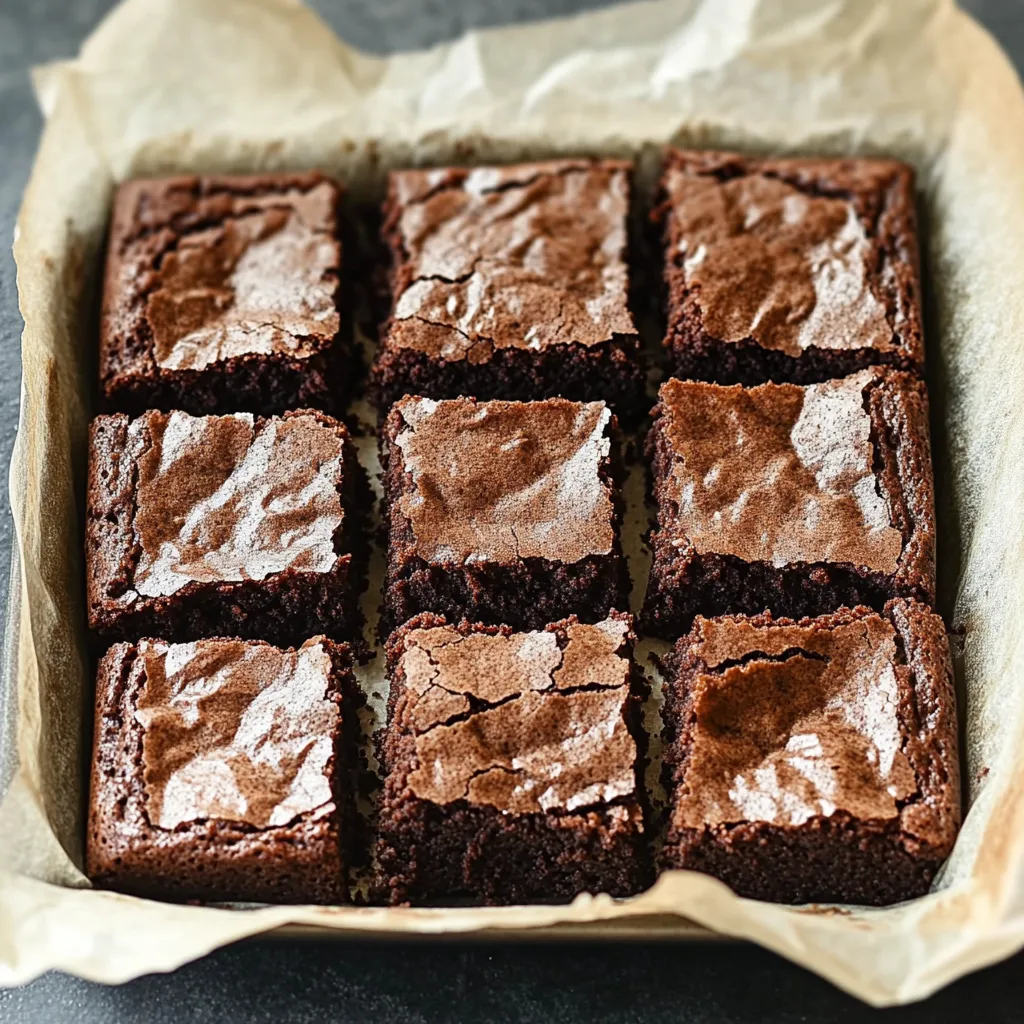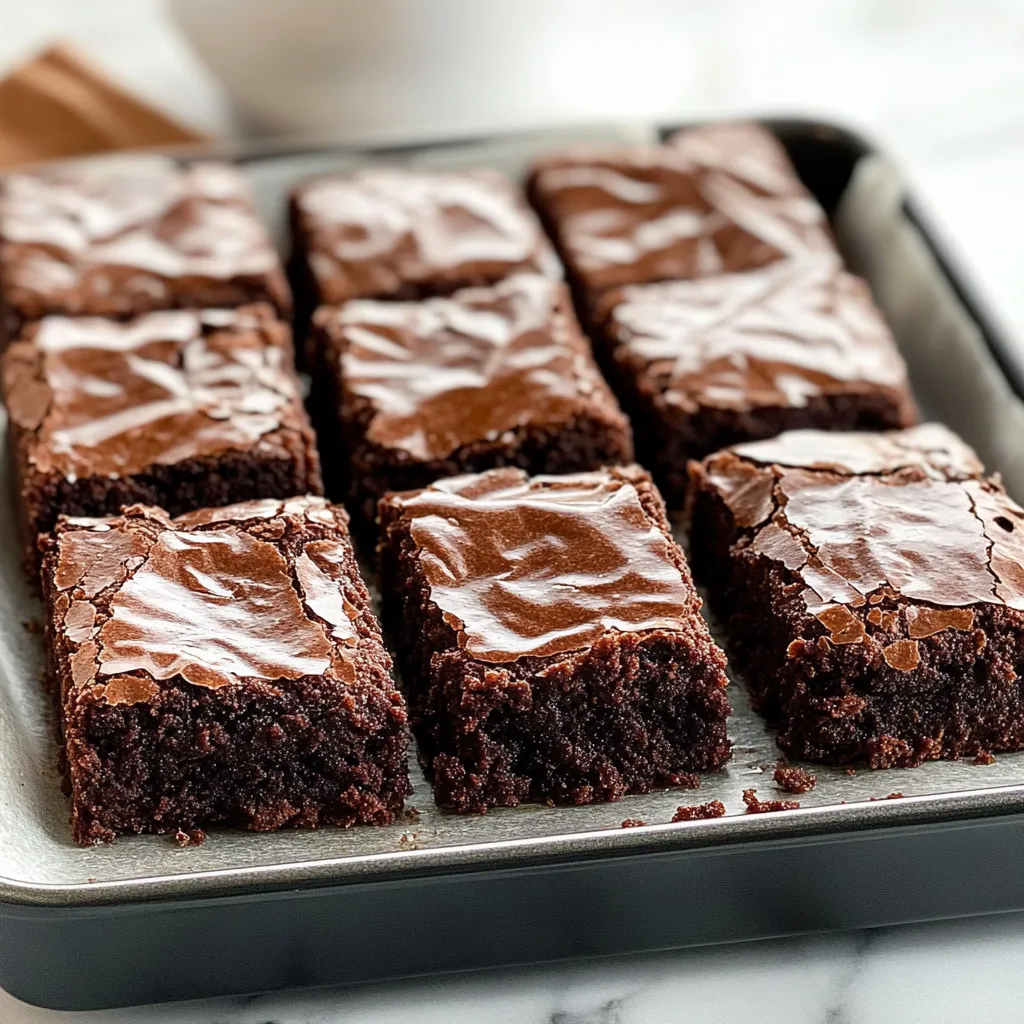 Pin it
Pin it
Imagine biting into what appears to be a classic chocolate brownie, only to discover an unexpected chewy resistance that transforms the entire experience into something extraordinary. These mochi brownies deliver precisely that moment of delightful surprise, combining the familiar comfort of rich chocolate brownies with the distinctive stretchy texture that makes mochi so irresistible. The marriage of these two beloved treats creates something entirely unique, offering the best elements of both worlds in every bite. For anyone seeking gluten-free indulgence without compromise, these brownies prove that dietary restrictions need never limit culinary creativity or satisfaction.
I rediscovered these brownies after my brother returned from Hawaii with stories of local treats that rekindled memories of batches I'd made years earlier. What began as a nostalgic craving evolved into a kitchen mission to perfect the recipe. After several experimental batches, watching the transformation from my original chocolate-flavored mochi cake into these authentic-looking brownies with their signature crackly top became a source of genuine pride in my kitchen adventures.
Essential Ingredients
- Mochiko: This glutinous rice flour creates the distinctive chewy texture and cannot be substituted with regular rice flour
- Cocoa powder: Provides rich chocolate flavor while allowing the proper brownie structure to develop
- Butter: Contributes essential richness and helps create the coveted crispy edges
- Eggs: Act as crucial structure-builders while adding richness to the final texture
Brownie Creation Process
- Preparation foundation:
- Line your baking pan completely with parchment paper, creating handles for easy removal after baking.
- Chocolate base:
- Melt butter completely before whisking with cocoa powder until absolutely smooth and glossy.
- Sugar incorporation:
- Add both granulated and brown sugars, whisking thoroughly to dissolve crystals completely.
- Egg enrichment:
- Incorporate eggs one at a time, ensuring complete integration before adding the next for proper structure development.
- Mochiko magic:
- Sift mochiko flour directly into the mixture to prevent any lumps that would disrupt the final texture.
- Gentle folding:
- Use a spatula with deliberate, thorough strokes until no dry spots remain without overworking the batter.
- Slow baking:
- Pour the loose batter carefully into your prepared pan and bake patiently at moderate temperature.
- Edge development:
- Look for firmly set edges that have slightly pulled away from the pan while the center remains set but not dry.
- Cooling patience:
- Allow brownies to cool completely in the pan before attempting to lift out or slice to preserve their perfect texture.
 Pin it
Pin it
My first attempt at these brownies years ago ended with disappointing, gummy squares that lacked the crispy edges I craved. Through repeated testing, I discovered that the key lies in extended baking time and proper pan preparation. Watching guests take their first bite now brings satisfaction as their expressions transform from familiar brownie expectations to surprised delight at the unexpected chewy resistance.
Creative Variations
Explore delicious adaptations that maintain the essential mochi character while introducing exciting flavor dimensions. Incorporate matcha powder into a portion of the batter before baking, creating a marbled effect that references traditional Japanese flavors. Consider adding black sesame seeds or paste for nutty complexity without changing the distinctive chewy texture. White chocolate chips fold beautifully into the batter, creating pockets of creamy sweetness against the chewy background.
 Pin it
Pin it
My journey with mochi brownies represents the beautiful intersection of culinary traditions that initially seem worlds apart. What began as simple curiosity about combining beloved textures evolved into a signature recipe that friends request specifically for gatherings. The magical moment when someone takes their first bite, expecting a traditional brownie experience, then discovers the delightful resistance that makes these treats so special, reminds me why I love sharing food that tells cultural stories.
Frequently Asked Questions
- → What is mochiko flour and where can I find it?
- Mochiko flour is sweet rice flour (also called glutinous rice flour, though it contains no gluten). It's made from sticky short-grain rice and gives these brownies their chewy texture. You can find it in Asian grocery stores, the international aisle of well-stocked supermarkets, or online. Brands like Koda Farms are commonly available.
- → Can I substitute regular rice flour for mochiko in these brownies?
- No, regular rice flour won't work as a substitute for mochiko (sweet rice flour). Regular rice flour lacks the sticky, glutinous properties that give mochi its characteristic chewy texture. The brownies would end up grainy instead of chewy if you used regular rice flour.
- → Why do these mochi brownies take so long to bake?
- Mochi brownies need a longer baking time (60-70 minutes) because the mochiko flour needs extra time to fully cook and set properly. The extended baking develops the unique chewy texture. If underbaked, the center will be too gooey and sticky rather than pleasantly chewy.
- → Can I use plant-based milk instead of whole milk?
- Yes, you can substitute the whole milk with plant-based alternatives like almond, soy, or oat milk. Each will impart a slightly different flavor and richness to the brownies. For the closest match to the original recipe, use a full-fat version of your preferred plant milk.
- → Why are my mochi brownies still sticky even after cooling?
- Mochi brownies naturally have some stickiness due to the mochiko flour, but they shouldn't be overly sticky. If they're too sticky, they might be slightly underbaked. You can also try refrigerating them for 30 minutes before cutting, which firms them up and makes them easier to handle.
